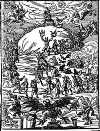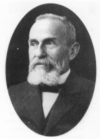A peacock’s efforts to woo a mate can be downright feather-shaking. When the colorful birds try to attract a female, they shake and rattle their fanned-out train feathers, a motion that shows off the shimmering, iridescent eyespots that dot their … Discuss
Source: The Free Dictionary
 On April 30, 1975, Saigon, the largest city in Vietnam and the capital of South Vietnam, was captured by the National Liberation Front and the People’s Army of Vietnam. The event marked the end of the Vietnam War (1955-1975) and the reunification of Vietnam under communist rule. The city lost its status as the country’s capital and was renamed after what Vietnamese Marxist revolutionary leader and late president of North Vietnam?
On April 30, 1975, Saigon, the largest city in Vietnam and the capital of South Vietnam, was captured by the National Liberation Front and the People’s Army of Vietnam. The event marked the end of the Vietnam War (1955-1975) and the reunification of Vietnam under communist rule. The city lost its status as the country’s capital and was renamed after what Vietnamese Marxist revolutionary leader and late president of North Vietnam?  According to an old
According to an old  Bleuler was a Swiss psychiatrist who in 1908 introduced the term “schizophrenia.” While studying schizophrenic patients, Bleuler concluded that the disease was not one of dementia, a condition involving organic deterioration of the brain, but one consisting of a state of mind in which contradictory tendencies exist together. He argued, against the prevailing opinion, that such patients were not incurable. “Schizophrenia” replaced what term for the disease?
Bleuler was a Swiss psychiatrist who in 1908 introduced the term “schizophrenia.” While studying schizophrenic patients, Bleuler concluded that the disease was not one of dementia, a condition involving organic deterioration of the brain, but one consisting of a state of mind in which contradictory tendencies exist together. He argued, against the prevailing opinion, that such patients were not incurable. “Schizophrenia” replaced what term for the disease?  The gallbladder is a small sac that stores and concentrates bile, a bitter fluid that aids in the emulsification of fats. In some people, small, pebble-like masses composed chiefly of cholesterol, calcium salts, and bile pigments form in the gallbladder or bile ducts. The presence of gallstones can lead to painful obstruction or infection and is sometimes treated with cholecystectomy, the surgical removal of the gallbladder. How does a procedure called lithotripsy break up gallstones?
The gallbladder is a small sac that stores and concentrates bile, a bitter fluid that aids in the emulsification of fats. In some people, small, pebble-like masses composed chiefly of cholesterol, calcium salts, and bile pigments form in the gallbladder or bile ducts. The presence of gallstones can lead to painful obstruction or infection and is sometimes treated with cholecystectomy, the surgical removal of the gallbladder. How does a procedure called lithotripsy break up gallstones?  During WWII, the Royal Air Force delivered 6,680 tons food into parts of the German-occupied Netherlands, with the acquiescence of the occupying forces, to feed starving Dutch citizens suffering from a famine that ultimately claimed 18,000 lives. Operation Manna, as it was called, was named for the food that the Book of Exodus says miraculously appeared for the Israelites in the wilderness. The mission ended on May 8, when Germany’s surrender ended the war in Europe. How was the food delivered?
During WWII, the Royal Air Force delivered 6,680 tons food into parts of the German-occupied Netherlands, with the acquiescence of the occupying forces, to feed starving Dutch citizens suffering from a famine that ultimately claimed 18,000 lives. Operation Manna, as it was called, was named for the food that the Book of Exodus says miraculously appeared for the Israelites in the wilderness. The mission ended on May 8, when Germany’s surrender ended the war in Europe. How was the food delivered?  Greatly admired in his time, Arbuthnot was a Scottish scientist, mathematician, and satirist. The court physician to Queen Anne, he is best remembered for his five “John Bull” pamphlets, political satires on the Whig war policy that introduced the character John Bull, a personification of England akin to the American Uncle Sam. With his friends Jonathan Swift, Alexander Pope, and John Gay, Arbuthnot was a founding member of the famous Scriblerus Club, an organization devoted to what?
Greatly admired in his time, Arbuthnot was a Scottish scientist, mathematician, and satirist. The court physician to Queen Anne, he is best remembered for his five “John Bull” pamphlets, political satires on the Whig war policy that introduced the character John Bull, a personification of England akin to the American Uncle Sam. With his friends Jonathan Swift, Alexander Pope, and John Gay, Arbuthnot was a founding member of the famous Scriblerus Club, an organization devoted to what?  Grapeshot is a cluster of small iron balls loaded into a canvas bag and fired from a cannon. When a grapeshot-loaded cannon is fired, the balls disperse at a high velocity, causing devastation similar to that of a scaled-up shotgun. This ammunition was especially effective against infantry massed at close range and was used until the early 19th century, when it was largely replaced by metal-cased canister shot. Which pirate was killed by a blast of grapeshot?
Grapeshot is a cluster of small iron balls loaded into a canvas bag and fired from a cannon. When a grapeshot-loaded cannon is fired, the balls disperse at a high velocity, causing devastation similar to that of a scaled-up shotgun. This ammunition was especially effective against infantry massed at close range and was used until the early 19th century, when it was largely replaced by metal-cased canister shot. Which pirate was killed by a blast of grapeshot?